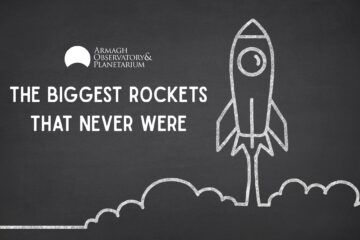In a windy Boca Chica on Saturday night, in the shadow of his new Starship rocket, Elon Musk gave a dramatic outline of his vision of the future of humanity.

Standing beneath the 50m tall, 9m wide Starship Mk 1 prototype, Musk described the SpaceX vision for the future and the challenges they’re overcoming to get there, and thanked the teams and suppliers involved for “the most inspiring thing I’ve ever seen”. A Falcon 1, SpaceX’s first rocket that first reached orbit 11 years ago to the day, stood on display next to Starship showed just how far they have come. Looking back on this achievement, Musk said with a chuckle that he has “great respect for anyone who makes it to orbit”, a comment some may interpret as a sly dig at fellow billionaire and space rival Jeff Bezos, who’s Blue Origin company is competing with SpaceX in a modern day space race.

From these early Falcon 1 launches Musk has outlined the need for a reusable rocket, suggesting how expensive travel would be if the vehicle could only be used once, be it a plane, car or horse(?!). With the gravity we have on Earth, reusability is barely possible due to the laws of physics, and early attempts using parachutes on the Falcon 1 were a long way from successful. Instead, the next generation Falcon 9 went on to be recovered propulsively, and a similar approach will be taken with the new Starship and its Super Heavy booster. Learning this was was no easy task for SpaceX, with many failures along the way as can be seen in this hilariously edited bloopers real.
Starship will reenter “like a skydiver”, using large fins to control itself as it slows down from orbital speed, before flipping its engines towards the ground to touch down. “It’s going to be totally nuts to see that thing land”, Musk safely predicted. It’s expected that the vehicle the presentation was staged beside will begin practising this landing within a month or two. “It’s wild”, was how Musk described the plan.
During reentry the front facing half of Starship will be protected by lightweight but tough ceramic tiles, while the reflectivity of the steel rocket will help keep the back at a safe temperature. The steel construction is one of the most important, and dramatic, design choices for Starship. While you would expect a metal construction to be heavier than the modern carbon fibre composite earlier planned, at the extremes of temperature Starship will encounter stainless steel is actually stronger and lighter. Furthermore, a steel rocket would be much easier to repair on the Moon or Mars than a carbon fibre one, and it could even to be cut up and used for other purposes. And just as importantly, it’s much cheaper, around 2% the cost of carbon fibre. “I love steel”, Musk confessed.
The Super Heavy booster, which will help Starship on its way to orbit, will also be made of stainless steel, and will be even taller than Starship. Up to 37 highly efficient Raptor engines will power Super Heavy, with a further 6 propelling Starship itself. Super Heavy will eventually produce twice the thrust of the historic Saturn V Moon rocket, and will be fully reusable in much the same way as the Falcon 9 is today. The Raptor engines powering both stages are a technological marvel themselves, using a complex process called full-flow staged combustion (FFSC) to make them incredibly efficient, without which the reusability of the system wouldn’t be possible. FFSC basically means you burn all your propellant in the combustion chamber without wasting any powering separate pumps, so all the energy released by burning fuel goes out of the nozzle and giving thrust. This excellent diagram by Tim Dodd, the Everyday Astronaut, shows the complexity of getting a FFSC engine to work.

But the event was about more than offering technical details about the rocket. Musk sought to inspire and enthuse with his plans, showing videos of the historic Falcon Heavy launch in February 2018 set to “Life on Mars” by David Bowie, and joked that the payload of his Tesla Roadster was “just to confuse the aliens in the future”. Videos of the Raptor engine firing and the Star Hopper test rocket flying showed how seriously they’re taking this project, and Musk used his final words to explain why he feels this is important.

Reflecting on the lack of signs of alien life elsewhere in the universe, he talked about how long it has taken life on Earth to reach the point it is at now, and how narrow the window for life to thrive on a planet is.
“Consciousness is a very rare and precious thing, and we should take whatever steps we can to preserve the light of consciousness. The window has been opened after 4.5 billion years, and it might not be open for long. We should become a multi-planetary civilisation while that window is open. And we should do it now.”
Over the coming months, years and decades with Starship and Super Heavy, we may be just about to begin.




0 Comments